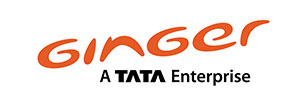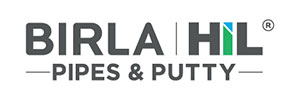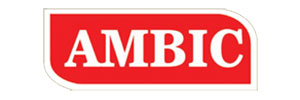ZLD Based ETP Plant
Overview of ZLD Based ETP Plant
Zero liquid discharge (ZLD) refers to a treatment process in which the plant discharges no liquid effluent into surface waters, in effect completely eliminating the environmental pollution associated with treatment. Apart from this benefit, a ZLD process also makes effective use of wastewater treatment, recycling, and reuse, thereby contributing to water conservation through reduced intake of fresh water. This chapter discusses the challenges of ZLD in a variety of process plants, such as bulk drug manufacturers, textile factories, and chemical and fertilizer plants. Creating zero discharge solutions can be accomplished by concentrating the effluent using various techniques, including membrane-based and multiple effect evaporation-based systems, and recovery and recycling of water.

Frequently Asked Questions
It is the process of dissolving calcium chloride to release hydrochloric acid. The rate of hydrolysis increases with water temperature. To handle the corrosive properties of salts, construction materials must be corrosion-resistant. High-end noble alloys like high nickel-chrome-molybdenum are commonly used to construct final crystallizers.
In addition to treating wastewater, ZLD is also used to produce biogas and ethane. This process utilizes positively and negatively charged ions that flow through a semipermeable membrane. Usually, electrodialysis is performed in stages to concentrate the brine, and it is often used with RO systems to remove as much as 80 per cent of the water. While ZLD has numerous benefits, it has high operating costs and requires a large-scale facility and a dedicated staff.
ZLD systems are still expensive and complex to implement and maintain despite their potential benefits. It is important to work with an experienced specialist who has extensive knowledge of related technologies to ensure optimal performance. For example, water technology consultants and system integrators should thoroughly understand other techniques and technologies. For example, high recovery reverse osmosis is a popular option for achieving zero liquid discharge.
The ZLD process uses thermal processes to create solid waste. The most common thermal technologies are multi-stage flash (MSF), multi-effect distillation (MED), and mechanical vapour compression (MCV). A ZLD solution can be designed to treat various types of wastewater with varying levels of purity. The dissolved solids are filtered and precipitated into crystals using a de-watering system. The crystals are removed through a centrifuge or filter press while the water vapour is recycled back into the process.
The ZLD process can be used for many purposes. It can be used to treat water in a variety of ways. It is highly efficient in treating brine and can be combined with other processes for wastewater treatment. The ZLD process can be applied to municipal, industrial, or commercial applications. The configuration of the membrane determines its efficiency and cost. If a power plant uses large amounts of water to operate, the process can effectively capture and reuse dissolved solids.
The ZLD system consists of two main steps. The first step is pre-concentration, which can be achieved through electrodialysis or membrane brine concentrators, and these technologies can recover up to 60 per cent of the wastewater. The second step is the crystallizer, which boils the water until impurities crystallize and are filtered out as solids. It is also capable of recovering up to 100% of the wastewater.
Zero Liquid Discharge is a wastewater treatment method that removes all liquid waste from a system. This technology reduces wastewater and creates clean, safe water that can be reused. It is not only beneficial to humans and the environment, but it’s also cost-effective for businesses. Traditional wastewater treatment processes remove water and suspended solids, but this solid material consumes the oxygen necessary for plants and animals.
Zero Liquid Discharge is a wastewater treatment process that eliminates all liquid waste from a system. This process is cost-effective and produces clean water that can be reused. Zero Liquid Discharge is better for the environment than other wastewater treatment processes. By eliminating the dissolved solids and allowing water to pass through, wastewater treatment saves money and the environment. Furthermore, it’s beneficial to the environment, as the process is environmentally friendly and cost-efficient.
The ETP plant uses several physical, biological, and chemical processes to remove toxic and non-toxic substances from wastewater. It begins with a screening device to remove large, floating solids. Another physical process, sedimentation, involves adding chemicals to the water that settle minute particles. A grit chamber removes dense inorganic solids and serves to homogenize the effluent. All of these processes are essential for the treatment of wastewater.
The chemical used in an ETP plant is referred to as effluent. This term refers to the stream that comes out of the chemical reactor. Effluent is the treated version of wastewater. In an ETP plant, the water is discharged into the environment safely. A well-maintained ETP plant will meet National Standards for water quality. Here are the major components of an ETP plant.
An ETP plant will be designed to handle a variety of wastewater conditions. The most common pollutants include oil and grease and biodegradable organics. A well-designed system will treat wastewater to a level that will not harm the environment. A water sample may require 100 mg/L of magnesium hydroxide to raise the pH to eight, and a similar water sample would require 138 mg/L of lime, caustic soda, or both.
Most of the factories today do not have an ETP, and this is because of their under-capacity design and lack of maintenance. Moreover, many factories are hesitant to install ETPs because of high operating and maintenance costs. The solution is to promote the installation of an ETP in the factories and make it more cost-effective. There are several reasons why you should install an ETP in your factory. If you are planning to invest in a new one, here are some tips that can help you make a good choice:
First, the cost of installing an ETP is high. The cost depends on the materials used and the quality of the equipment used. Another reason why the cost of an ETP is so high is the lack of manpower and facilities for conducting in-plant jar tests. Secondly, the effectiveness of the ETP is dependent on the cost of the chemical additives used. In the case of a small-scale manufacturer, it is costly to invest in a large-scale ETP.
Third, the ETP must meet a strict set of standards. This is because ETPs need proper monitoring and auditing from the Government. Only then can they be trusted. However, the Government cannot be left to suffer the consequences of its actions. In addition, the private sector must take the initiative and make the right investment. If they cannot achieve this, they will be forced to shut down operations and invest in other industries.
Client testimonials
Our Clients
















